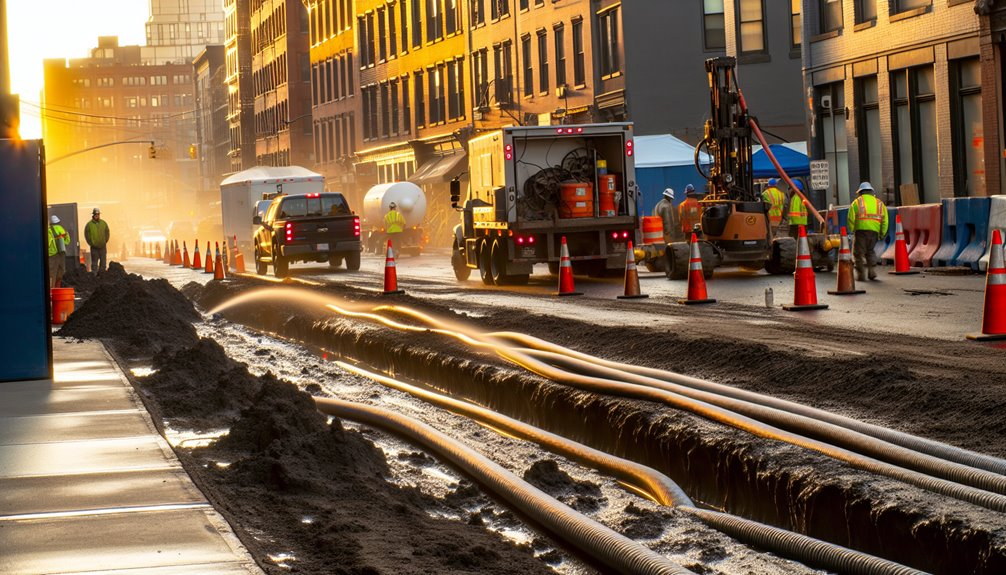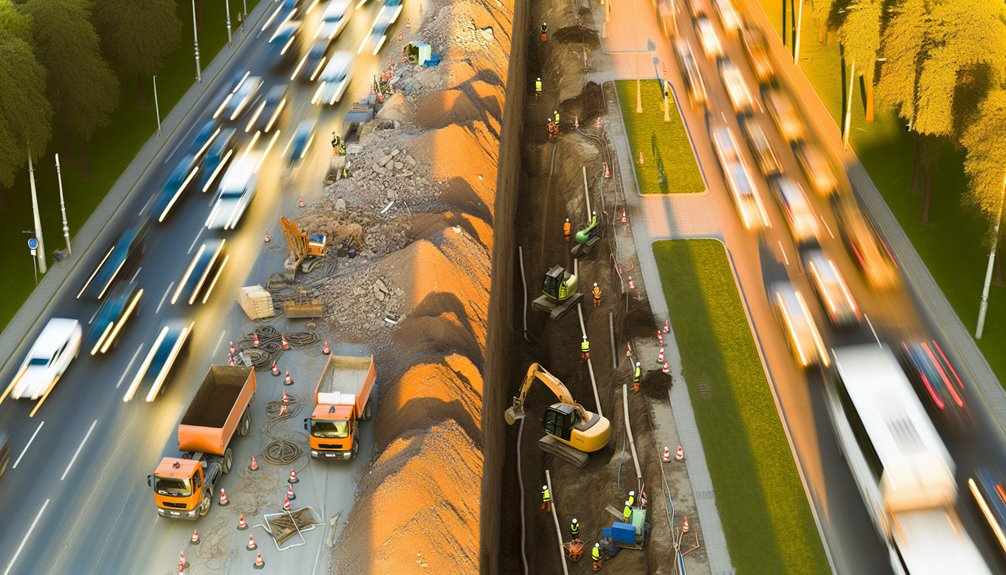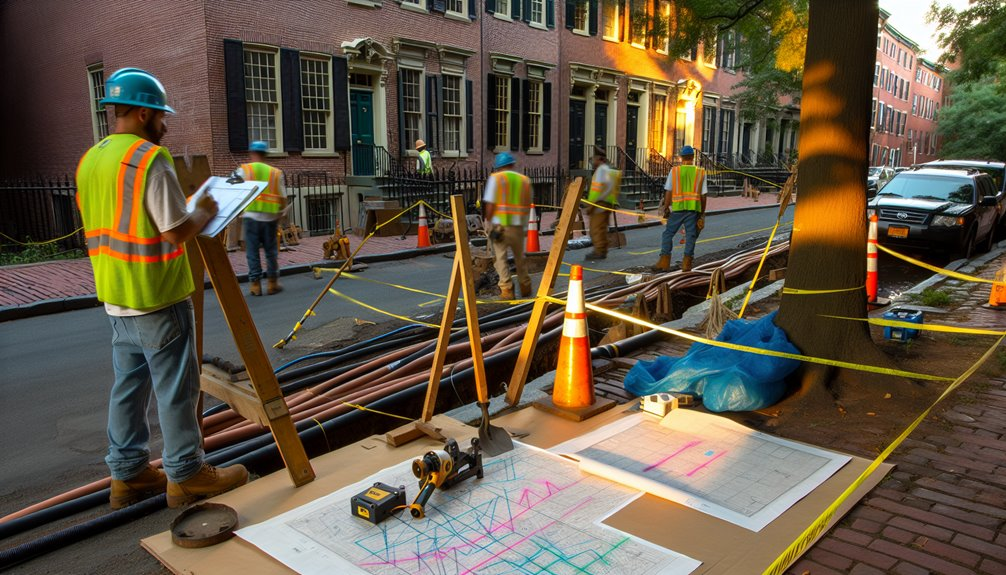When a main fails, every minute adds cost—service credits, traffic control, and pavement restoration can exceed 60% of total spend. You can cut outage duration and reinstatement by using trenchless methods: HDD for bypass routes, pipe bursting for rapid upsizing, and CIPP for same‑day lining. With GIS‑driven dispatch, preauthorized permits, and mobilization kits, you’ll hit sub‑hour response targets, reduce strike risk, and stabilize lifecycle costs—but which method fits your failure mode and soil window?
The Urgency Factor: Why Every Minute Matters in Utility Failures
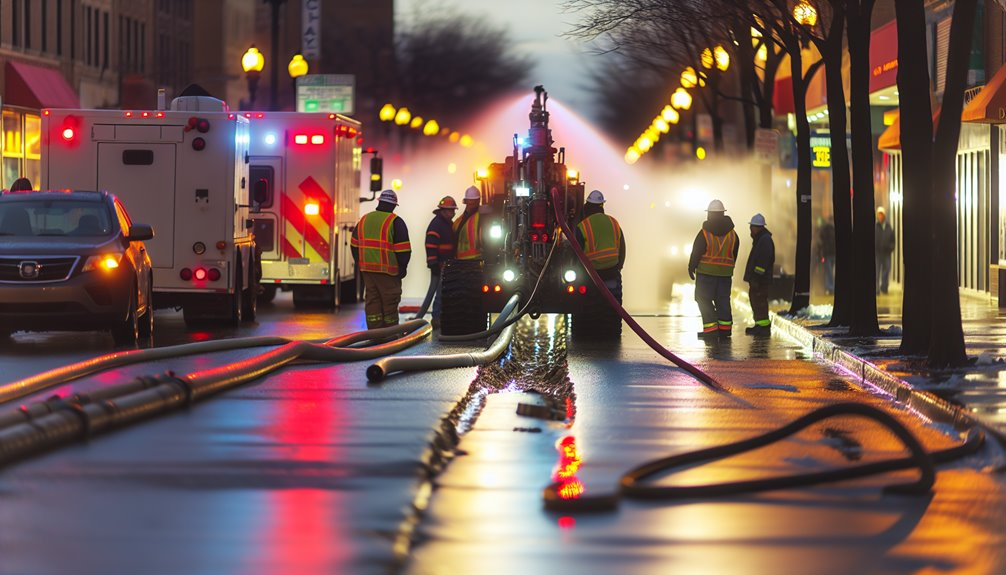
When a water main bursts or a gas line leaks, every minute compounds risk, cost, and service disruption. You’re not just fixing a pipe; you’re controlling cascading impacts. After 60 minutes, average water loss can exceed thousands of gallons, pavement undermines, and traffic control costs escalate. Gas leaks trigger evacuations, causing measurable community disruption and overtime burn rates. Mean time to respond drives insurance exposure, penalty risk, and regulatory compliance audits. Delay increases trench shoring requirements, utility locates, and site restoration scope, typically adding 15–30% to direct costs. Crews, customers, and partners expect decisive action and clear metrics: isolation time, leak-rate reduction, and service restoration intervals. When you compress the critical path, you protect budgets, maintain trust, and keep your network resilient.
Trenchless Technologies at a Glance: HDD, Pipe Bursting, and CIPP
Speed matters, so your fastest path to containment and restoration often runs through trenchless methods: horizontal directional drilling (HDD), pipe bursting, and cured-in-place pipe (CIPP).
HDD—also known as horizontal drilling or directional boring—steers a pilot bore with <1% deviation, installs product pipe along precise alignments, and typically cuts surface disruption by 70–90%.
Pipe bursting fractures brittle or deteriorated mains while towing in a same- or upsized pipe; expect 30–60% lifecycle cost savings versus open cut when pavement restoration dominates.
CIPP creates a structural liner (typically ASTM F1216-compliant) that restores 50–100% of original capacity with minimal excavation and 50–75% faster return-to-service.
You reduce traffic control, utility conflicts, and permitting risks, while your team aligns around predictable durations, quantified risk, and lower total installed cost.
Speed to Mobilize: Rapid Deployment for Time-Critical Repairs
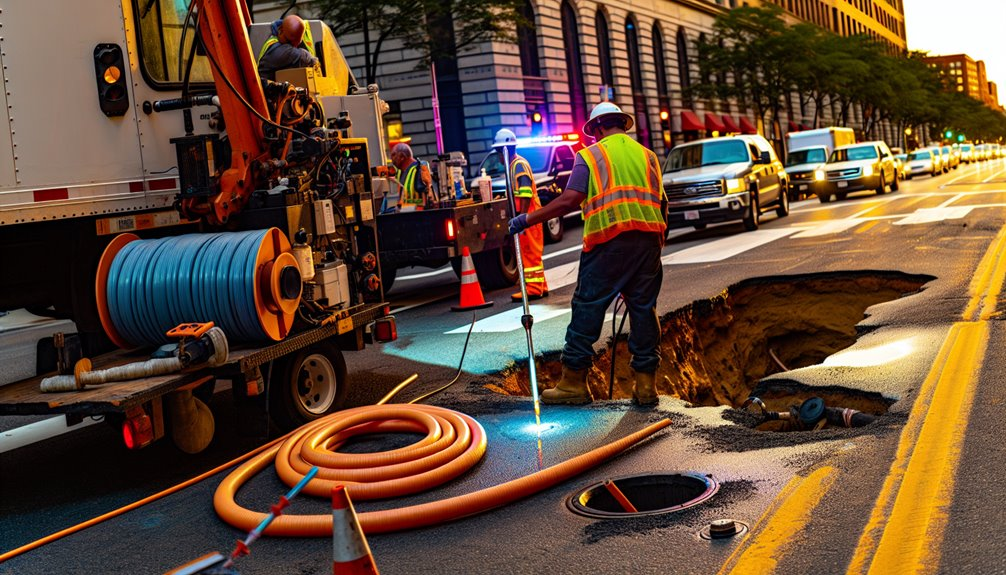
Although every minute of uncontrolled flow compounds cost and risk, you can cut hours or days by standardizing rapid-mobilization playbooks around trenchless kits. You align on rapid staging, preapproved vendors, and quick procurement paths so mobile crews can roll in under two hours, not two shifts. Define crew roles, calibrate equipment, and prepack consumables to hit site with zero idle time.
- Preload HDD, bursting, and CIPP kits for emergency staging with serialized inventories.
- Lock in 24/7 quick procurement for resin, pipe, and drill string with SLA-backed lead times.
- Maintain GIS-driven asset triage to dispatch the nearest qualified mobile crews.
- Use readiness drills and time-on-task metrics to shave setup to sub-30 minutes.
- Standardize cut sheets, permits, and traffic plans in digital binders for one-click deployment.
Cost Savings Beyond the Dig: Minimizing Restoration and Traffic Control
Beyond the bore path, trenchless methods cut total project spend by shrinking restoration footprints and compressing traffic control windows.
You avoid milling, full-depth replacement, and landscape rehab across long corridors. With minimal restoration, crews patch compact launch/exit pits, not entire lanes. That reduces asphalt, concrete, and labor line items by 30–60% compared to open-cut benchmarks.
Traffic control is leaner, too. Shorter work zones mean reduced signage, fewer cones, and fewer flaggers. Permits often scale down from multi-lane closures to shoulder shifts, trimming rental and inspection fees. You also lower user-delay costs: fewer hours of queueing, less detour mileage, improved public sentiment.
Quantify it: every 100 linear feet installed via HDD or pipe bursting can eliminate 400–800 square feet of surface rehab and cut MOT charges by 25–50%.
Safety and Risk Reduction for Crews and the Public
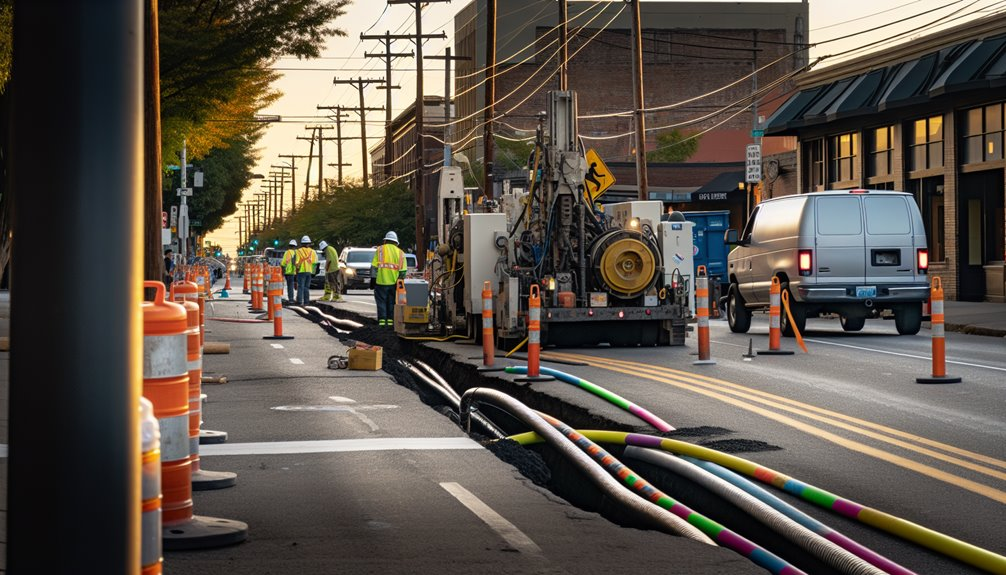
While open-cut exposes crews and drivers to extended work zones and heavy equipment interactions, trenchless methods confine activity to small launch/exit pits and shorten exposure windows. You cut risk at its source: fewer lane closures, less hand exposure to utilities, and reduced struck-by incidents. With proper crew training and calibrated guidance systems, you maintain tight tolerances and predictable outcomes, which lowers incident rates and insurance costs. Public outreach aligns neighbors and businesses, minimizing conflict points and complaints.
- Fewer traffic intrusions reduce near-miss events by an order of magnitude.
- Smaller footprints cut third‑party utility strikes via precise locating.
- Remote tooling lowers confined-space and trench wall hazards.
- Shorter schedules reduce cumulative exposure hours and overtime fatigue.
- Standardized procedures plus telemetry create auditable safety proof.
You deliver faster restoration, safer streets, and shared confidence.
Real-World Scenarios: Water, Sewer, Gas, and Power Line Emergencies
When a 6-inch water main ruptures at rush hour, a sewer lateral collapses under a busy corridor, a 2-psi gas service leaks near a school, or a 15-kV feeder faults beneath a five-lane arterial, trenchless methods cut time-to-restoration and total installed cost.
You isolate, bypass, and deploy pipe bursting, cured-in-place pipe, or HDD to restore flow or power in hours, not days.
Typical results: 40–70% less pavement removal, 30–50% fewer traffic-control hours, and 20–35% lower reinstatement spend.
During storm surge events, point repairs via sectional CIPP keep I/I down, protecting treatment capacity.
For gas, keyhole excavation plus PE insertion reduces ignition risk and patching costs.
For a feeder-induced industrial outage, guided boring enables same-day conduit replacement while maintaining lane availability and utility separation tolerances.
Planning and Readiness: Choosing the Right Method Under Pressure
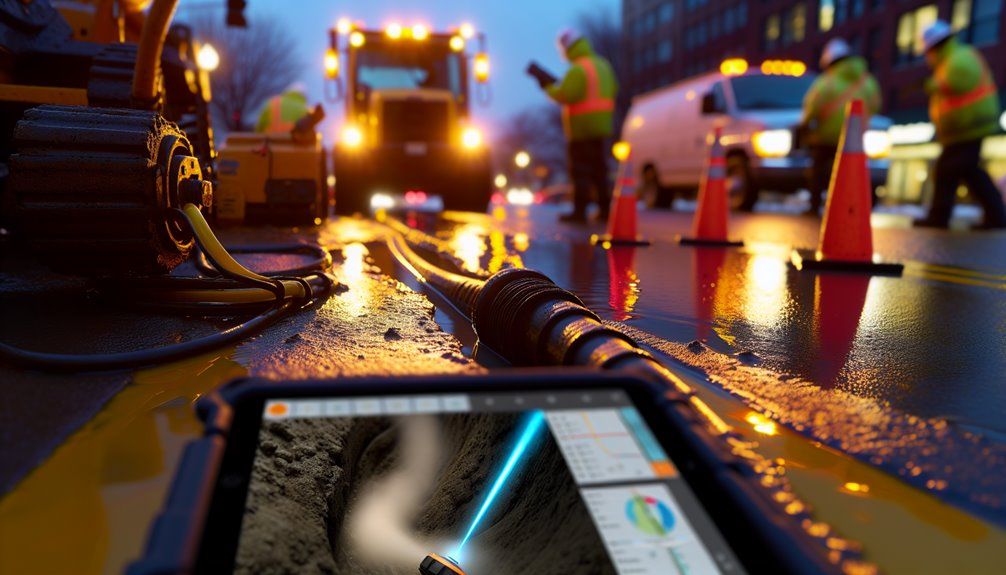
Those outcomes only materialize if you’ve prebuilt a decision framework that matches failure modes to trenchless options under tight constraints. You prioritize service restoration time, risk, and unit cost. Under pressure, you’ll select HDD, pipe bursting, CIPP, or microtunneling by quantifying clearance, host-pipe condition, and hydraulics, while aligning stakeholder coordination and regulatory compliance.
- Map failure modes to executable methods with go/no-go metrics (burst ratio, bend radius, annulus).
- Pre-authorize vendors, materials, and permits; set SLA clocks tied to cost per hour of outage.
- Stage decision trees by soil class, utility density, and bypass flow requirements.
- Use readiness drills with telemetry and QA hold points to lock in cycle times.
- Standardize cost models: NPV, risk-adjusted contingencies, and restoration penalties.
This readiness lets your team act fast, cut costs, and deliver together.
Conclusion
As the owner of Boring Bros., I know firsthand how critical fast, reliable restoration is — and how trenchless methods like HDD, pipe bursting, and CIPP can get you back up and running with less disruption, lower cost, and safer worksites. If you want to see how we can help in your next water, sewer, gas, or power emergency, visit boringbro.com or give us a call at (954) 639-6167. I’d be glad to talk through options and find the right solution for your project.

